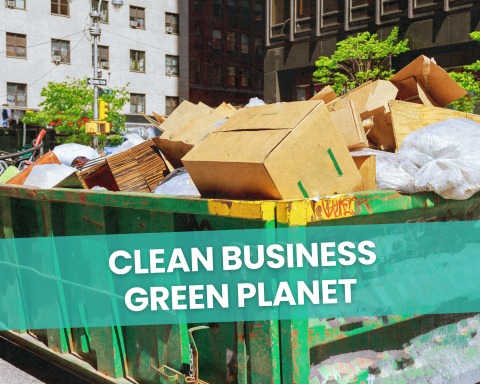Commercial Recycling Services in California: A Deeper Dive into Beneficial Reuse
Table of Contents
Commercial Recycling Services in California
California, a state known for its progressive environmental policies, is at the forefront of waste management solutions. Yet, a hidden challenge lurks in our current commercial recycling services system. With bustling industries and millions of residents, the demand for sustainable recycling has never been higher. But is recycling as effective as we think it is?
The Unspoken Truth about Recycling
Surprisingly, only a fraction of the plastics and paper you drop into recycling bins gets a new lease on life. A staggering percentage is thrown out, mainly due to contamination from mixed materials. Let’s break down the real costs behind Commercial Recycling Services in California:
- Monetary costs: Collecting, sorting, and processing recyclables isn’t a penny-free task. The dollar amounts spent annually can leave businesses and municipalities staggered.
- Energy drain: Turning that soda bottle or magazine back into a usable product? It burns more energy than one would think, often negating the green intent behind recycling.
Myths Surrounding Recycling
While recycling is undeniably valuable, certain myths might distort its real efficacy.
Myths:
- All plastics are recyclable.
- Recycling always saves energy.
- There’s no limit to how many times an item can be recycled.
Reality Check: Some materials degrade with each recycling cycle. Over time, this can limit their recyclability.
Beyond Recycling: Embracing Beneficial Reuse
Imagine if instead of just recycling a product, we extended its life, giving it a new purpose and function. That’s Beneficial Reuse in a nutshell.
What is Beneficial Reuse?
It’s the practice of taking materials that would typically end up in a landfill and finding innovative, sustainable uses for them.
Why is it superior to traditional recycling?
- No more spiraling costs: Beneficial Reuse cuts down on operational expenses.
- Reduced carbon footprint: Less energy is consumed in the repurposing process compared to recycling.
- Amplified environmental impact: Recycling is just the tip of the sustainability iceberg.
Success Stories of Beneficial Reuse
Real-world examples showcasing the power of Beneficial Reuse.
- Inspiration 1: An old warehouse transformed into a community center, serving the locals with education and recreational facilities.
- Inspiration 2: Defunct railway tracks repurposed into hiking and biking trails, promoting wellness and eco-tourism.
- Inspiration 3: Used coffee grounds collected from local cafes, integrated into organic compost for urban farmers.
The Waste Management Hierarchy: A Hierarchical View of Waste Solutions
At the apex of the waste management pyramid is “Source Reduction and Reuse.” It trumps recycling and composting, which, though pivotal, aren’t silver bullets. Here’s a digestible breakdown:
- Source Reduction and Reuse: Picture a world where less waste is produced, and products are designed for longer life. That’s the zenith of sustainable waste management.
- Recycling/Composting: Familiar to most, yet they only address part of the issue.
- Energy Recovery: Think biomass. Organic materials turned into energy. Sounds futuristic? It’s happening now.
- Treatment and Disposal: The final frontier, where we address what’s left, ensuring it’s managed safely.
Commercial Recycling Services in California: A Pivot Towards Beneficial Reuse?
There’s a palpable shift in the air. Many leading Commercial Recycling Services in California are sensing the winds of change and realizing that recycling, while essential, isn’t the endgame. Beneficial Reuse holds the promise of a paradigm shift.
Scenario: Imagine a construction site where debris, instead of heading to a landfill, becomes the foundation for a new park. Or consider the tons of organic waste from restaurants morphing into nutrient-rich compost for urban gardens.
The Economic Upshot of Beneficial Reuse
Why Beneficial Reuse is not just ecologically sound but also financially savvy.
- ROI Boost: Money saved from decreased landfilling charges can be reinvested into the business.
- Community Engagement: Businesses embracing Beneficial Reuse can attract eco-conscious customers, boosting their market image.
- Tax Incentives: Governments, at various levels, often reward sustainable practices with tax breaks or rebates.
The Path Forward: How You Can Make a Difference
The adage, “Be the change you want to see,” has never rung truer. You, as businesses and individuals, wield the power to steer Commercial Recycling Services in California towards Beneficial Reuse. Here’s your roadmap:
- Educate and Advocate: Awareness is the first step. Propagate the gospel of Beneficial Reuse within your communities.
- Partner with Progressive Vendors: Seek out and support businesses championing Beneficial Reuse. Vote with your wallet.
- Incorporate Into Operations: For businesses, this could mean donating surplus goods rather than discarding or repurposing materials within your industry.
Barriers to Beneficial Reuse and How to Overcome Them
Challenges are a part of any transition. Here’s what stands in the way and potential solutions.
Barrier 1: Perception that Beneficial Reuse is costlier than recycling.
Solution: Long-term savings analysis, showcasing that initial investments can lead to future economic benefits.
Barrier 2: Lack of awareness about Beneficial Reuse opportunities.
Solution: Education campaigns, workshops, and community discussions to spread the word.
Barrier 3: Regulatory hurdles and outdated policies.
Solution: Engaging in advocacy, collaborating with policymakers, and updating regulations to favor Beneficial Reuse.
Conclusion: Re-Imagining Commercial Recycling Services in California
As the sun sets on the Pacific, casting a golden hue over California’s landscapes, it’s time to rethink our approach to waste. Let’s not just recycle. Let’s reimagine. Let’s repurpose. The future of Commercial Recycling Services in California is bright, and Beneficial Reuse might just be the beacon leading the way.










